Fifty years after winning his first Indy 500, Gordon Johncock receives his Baby Borg

INDIANAPOLIS – Gordon Johncock was never into fame or glory. He hated public speaking and personal appearances.
On the racetrack, however, few drivers ever made a bigger statement than the farmer from Hastings, Michigan.
“I done most of my talking with a steering wheel,” the 86-year-old Johncock told NBCSports.com. “As most people know, I wasn’t very good at making appearances and stuff I didn’t really like to do. I was farming and doing different things up north. When I got done racing, I got on an airplane or a car and went home and went to work.
INDY 500 PRIMER: Questions and answers for the world’s biggest race
“That is what I was really caring to do.”
Quiet and unassuming, Johncock prefers flannel shirts, blue jeans, and work boots instead of business casual. In fact, his attire has earned the nickname, “Johncock Casual.”
On April 24 at Binkley’s Kitchen and Tavern in the trendy Broad Ripple neighborhood of Indianapolis, the room was filled with Johncocks from all over the United States, all dressed in flannel shirts and blue jeans.
There were so many flannel shirts in the crowd, it looked like a lumberjack convention.
On this day, they came to honor a true racing hero and legend of the Indianapolis 500, Gordon Johncock, as he received his Baby Borg Trophy.
This year marks the 50th anniversary of Johncock’s 1973 Indianapolis 500 victory. Johncock also won a thrilling duel with Rick Mears to capture the checkered flag in the 1982 Indianapolis 500, and that race has become a standard by which other Indianapolis 500s are measured.
The Baby Borg ceremony was preceded by a special tour of Indianapolis Motor Speedway and the Indianapolis Motor Speedway Museum on Monday morning for Johncock’s family.
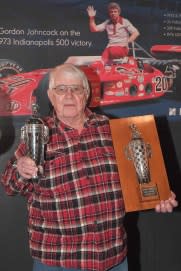
Johncock even drove one of the IMS Museum Tour Busses around the 2.5-mile oval that Johncock mastered so well during his spectacular racing career.
Plaques were given until 1988 when Rick Mears came up with the idea for Baby Borgs to go to the winner. On milestone anniversaries, past winners have received the Baby Borg, a mini-replica of the famous Borg-Warner Trophy.
Indianapolis 500 winners Parnelli Jones, Bobby Unser, AJ Foyt, Mario Andretti, and Al Unser all received Baby Borgs on the 50thanniversary of their first wins.
On April 24, it was Johncock’s turn to hold his Baby Borg.
“This is really something very special,” Michelle Collins, global director of marketing and public relations for BorgWarner, said before presenting the Baby Borg to Johncock. “Every day, I’m dealing with a lot of other things with corporate America, buying and selling companies, a lot of different things. This is the most exciting, by far.
“To continue this tradition of drivers who have been able to celebrate the 50th anniversary of their win is very special. This was really Steve Shunck’s brainchild, and he really admires Gordon Johncock. I’m happy to support it any way I can.”
Crew members. including 1982 crew chief George Huening and crew members John Anderson, Larry Faust, Bones Breiton, were reunited with the driver who won one of the most dramatic Indianapolis 500s in history in his famous duel with Rick Mears.
“We had breakfast the other day with my crew, and it was great to see all of the guys,” Johncock said. “Racing has really been good to me. With the help of a lot of people, no one person does it themselves. I don’t care if it’s baseball or football or basketball, along the way you have had help from a lot of people. One person can’t do it by themselves. They have to have help. They have all done a lot to put this together and I want to thank them very much and everybody for participating in this event.”
At that time, it was the closest Indianapolis 500 in history with the margin of victory just 0.16 seconds.
Today, it is the fifth-closest finish in Indy 500 history behind 1992 (Al Unser Jr. by 0.043 seconds ahead of Scott Goodyear) 2014 (Ryan Hunter-Reay’ by 0.0600 seconds over Helio Castroneves), 2006 (Sam Hornish Jr. by 0.0635 seconds over Marco Andretti and 2015 (Juan Pablo Montoya by 0.1046 seconds over Will Power).
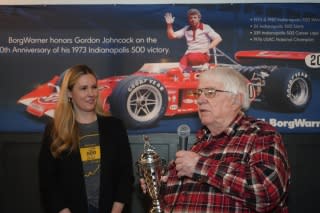
But that 1982 finish was the first time in Indianapolis 500 history that anyone had seen such a fierce fight to the checkered flag.
“By far the biggest thrill of my racing career was winning Indianapolis in 1982,” Johncock recalled. “The way it happened, the competition, so many near wins after 1973 and it all came together, and the car lasted in 1982.
“Plus, I’ve got amazing respect for Rick Mears, one of the very best. He was never my teammate, but I think we could have been good ones. I think the more pressure that was on me during a race the better I did and with the car pushing so bad and Rick on my tail it was great. I’ll never forget it. There are so many memories from that day – the crazy start, my final pit stop and winning by such a narrow margin – pushing so hard the final laps with Rick in my mirrors.”
At that time, there was no speed limit on pit lane and on Johncock’s final pit stop of the race, he came flying down a very bumpy pit lane for the pit stop that kept him ahead of Mears, setting up the dramatic fight to the finish.
“I really benefitted from no pit speed limit at Indianapolis,” Johncock said. “I could come into the pits off Turn 4 wide open and never let off until I was actually on pit road. I was probably going 190 miles an hour.
“But that was racing back then, and you had to go 100 percent wherever you could. You never really thought about it – you just kept your foot down as long as you could and slowed to hit your marks.”
His most dominating performance in the Indianapolis 500, however, came in 1977 when he was in front for 129 laps before his engine blew up while leading A.J. Foyt by a wide margin with just 16 laps remaining.
“The 1977 500 was the biggest disappointment of my life – the biggest,” Johncock said. “A.J. was 13 or so seconds behind me. I was running so smooth and easy. Then coming out of 4, the crankshaft breaks, I pulled over in the Turn 1 grass, get out of the car and laid down in the creek.
“We had it won. A.J. would have never caught me. He would have never caught me.
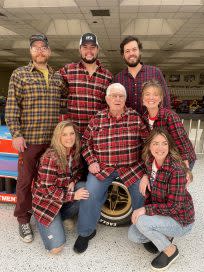
“Boy oh boy, I’m still disappointed.”
Those two Indianapolis 500s stand in a group of special races that rank high in the history of the “World’s Greatest Race.” The 1977 Indianapolis 500 is when Foyt became the first driver to win the Indy 500 four times in his career. The 1982 race is one of the best duels in Indy 500 history.
The 1973 race, however, isn’t remembered for its spectacular racing, it’s remembered for the dark side of racing.
It was one of the most morbid Indy 500s in history.
There were three fatalities, including popular driver Art Pollard, who was killed in the final Saturday morning practice before Pole Day Qualifications. Johncock’s teammate was Swede Savage, who was in a horrifying crash in Turn 4 and was badly burned as he tried to extricate himself from his racing seat, which was the only thing left on the track from the crash.
Savage would die from those injuries one month later.
Armando Teran, a crewmember for another teammate on the STP team, Graham McRae, was killed as he was running up pit lane after Savage’s crash and was hit by a speeding safety vehicle on pit road, in full view of the spectators (including the Indianapolis 500 Festival Queen and her court).
The impact was so severe, it sent Teran flying 30 feet in the air and ripped the shoes off his feet. Several Indianapolis 500 Princesses fainted when they saw the incident.
The race was red-flagged for the crash and eventually restarted. But it began to rain close to 6 p.m. and the race mercifully was called official after 133 laps with Johncock the winner. He led a race-high 64 laps, more than Bobby Unser (39), Al Unser (18) and Savage (12).
Through tragedy, there was triumph for Johncock and chief mechanic George Bignotti, who won his sixth Indy 500 win in 1973 on his way to seven (which he accomplished with Tom Sneva in 1983).
The darkness of 1973, brought tremendous safety advancements to the Indy 500 and the Indianapolis Motor Speedway, creating many bright memories.
On April 24, it was a time to celebrate, and it became a Johncock family reunion.
Relatives came from all over the country including his kids, grandkids, and great-grandkids.
Pamilee Johncock Koval is the youngest of five children from Gordon Johncock’s family. She is from Dallas, Texas, and brought her three children, one grandson, her son’s fiancé, and her daughter’s boyfriend to see her father get honored.
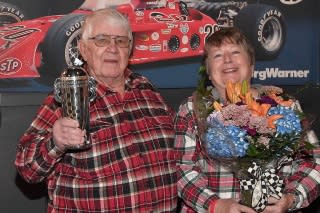
“Of course, we spent a lot of time at the track when I was younger, staying in apartments for the month of May,” Koval said. “We have spent a lot of time in Indiana when I was younger, but today was a great celebration having all of our family here, and there are a lot of us.
“We don’t get to see each other because we live across the country, but today was a great celebration with all of the grandchildren.”
Koval was 10 when Johncock won his first Indy 500 in 1973 and 19 when he won the race in 1982.
“That race was very exciting and the race with Rick Mears, being so close, was fabulous and it’s a memory we will never forget,” Koval remembered. “The experience from the race, victory circle and going to the victory banquet was incredible as a child.
“Just being in Victory Circle to celebrate as a family was awesome.
“It’s a joy that he felt. It was incredible but no different than any race. When he was done with the banquets and parties and signing things, he was ready to go home and go back to work.”
Johncock grew up in the late 1950’s and early 1960’s racing Super Modifieds and had most of his success on paved tracks, though he did get some memorable wins on the dirt. In 1964 driving a USAC Sprint car, he set a half-mile world record at high-banked Winchester Speedway in Indiana turning a blazing lap of 104.773 mph.
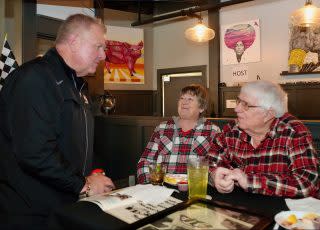
Johncock finished fifth as a rookie in 1965 at IMS. Jim Clark won ahead of Parnelli Jones, rookie of the year Mario Andretti and Al Miller. Johncock drove a roadster, one of only six front-engine cars in the field.
At 86, Johncock continues to put in a hard day’s work.
He has owned Johncock Forestry Products since 2010. There are 21 employees. Johncock Forestry Products mainly saws logs into pallet material and uses the bark from logs to make landscaping mulch. He lives in South Branch, Michigan, (population 841) with his wife Sue. They were married in 1990, and both have children from previous marriages.
“When I was 5, I started to work on the family farm, I drove a John Deere tractor and my dad had me follow a string that was attached to sticks at the end of each row of corn,” Johncock recalled. “He rode behind me on his tractor, that’s how it all started – farming and driving – all at five years old in Hastings. Michigan. Before I was five, they had me helping with other chores.
“I’ve been on a farm pretty much all my life and enjoy it.”
The “Man from Michigan” is more at home in a flannel shirt and blue jeans, than in a coat and tie. That was the theme for Monday’s “Baby Borg” event as the dress code was “Johncock Casual” — flannel shirts required.
Koval’s father is not a man who shows much outward emotion, but his daughter sensed just how much the Baby Borg celebration meant to him.
“It’s a joy that he felt, it was absolutely incredible,” Koval said, as her voice began to choke with emotion, her eyes welling with tears of pride. “We are so proud. It’s incredible.
“He’s a very humble man.
“It’s wonderful.”
Follow Bruce Martin on Twitter at @BruceMartin_500
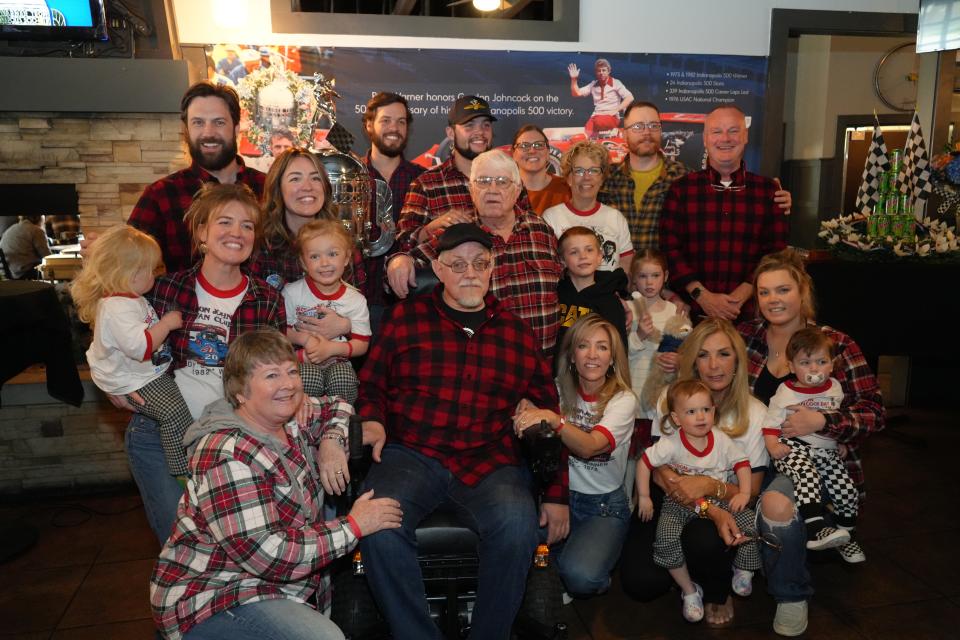
Fifty years after winning his first Indy 500, Gordon Johncock receives his Baby Borg originally appeared on NBCSports.com

